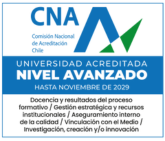Over the last two decades there has been growing interest in conducting applied research of teaching innovation processes in higher education, especially in the Science, Technology, Engineering and Mathematics (STEM) areas (Chasteen, Perkins, Beale, Pollock, & Wieman, 2011; Chasteen, Pollock, Pepper, & Perkins, 2012; Crouch & Mazur, 2001; de Araujo, Otten, & Birisci, 2017; Reid, 2016; Rein & Brookes, 2015). This is mainly due to poor learning results that have been identified in courses which use a traditional lecture approach as the main teaching strategy (Chasteen et al., 2012), which has raised questions about its use and foster change towards active learning in the STEM fields (Freeman et al., 2014).
As a result of these findings, the pedagogical changes in university STEM courses often involve a methodological approach that aims to center the educational process on the students following the principles of socio-constructivism (Piaget, 1926; Vygotsky, 1978), through active learning strategies such as the flipped classroom (Bergmann & Sams, 2012).
Chile has also been part of this endeavor. The Chilean Ministry of Education (MINEDUC) has developed a series of policies and STEM projects aimed at improving learning results and other indicators such as retention, equity of access and on time graduation (MINEDUC, 2014). As a result, several universities in the country have developed new approaches to improve STEM education to contribute to the goals of MINEDUC which, at the same time, seek to reach national economic development (OECD, 2017).
The Center for Teaching Development and innovation at Universidad Católica de Temuco, in Chile, has developed a course transformation model aimed at improving students’ learning results and attitudes towards undergraduate STEM courses. These courses have traditionally been characterized by high failure rates and low students’ satisfaction levels. The model considers the students’ learning needs in the context of a competency based higher education institution and considering high levels of socio-academic vulnerability of students (family income, University Selection Test scores, habitational conditions, etc.). This model is based on implementing student-centered teaching/learning activities, with a special focus on developing competencies related to problem solving, research, and on connecting the pedagogical process to real-world situations (Moya, Turra, & Chalmers, 2018). The learning activities have to be contextualized to the engineering work environment, so students can demonstrate competencies which will be relevant to their future jobs during their undergraduate courses.
As stated before, the aim of this model is to contribute to students’ learning considering the special conditions (competency-based model and students’ socio-academic background) in which the educational process at Universidad Católica de Temuco is developed. The model considers pedagogical accompaniment for Faculty which is done by including a pedagogical consultant from the Center for Teaching Development and innovation and it also considers the help from learning Assistants whose role is to accompany students throughout the implementation of the redesigned syllabus. The course transformation model considers three stages; diagnostic/design, implementation and evaluation.
During its first stage, the model considers a diagnosis of the conditions under which the courses are to be implemented. This involves characterizing the students (number in each course, academic background, learning characteristics, access to resources, etc.), and the types of learning activities, evaluation mechanisms and other aspects of the course declared on the current syllabus. After characterizing these conditions, faculty evaluate the most suitable teaching, learning and evaluation methodologies for each particular course considering the diagnostic information and the educational model of the institution. This is the information considered to develop the new syllabus of the course.
The implementation phase starts after the new course design is completed. During this stage, the students and faculty are closely accompanied by the learning assistants and pedagogical consultants. Once the new strategies have been implemented, the effectiveness of the course transformation is assessed based on an impact evaluation framework that includes the incidence of the transformation in faculty, students and the institution (Moya et al., 2018).
The course transformation model is based on the general principles of the ADDIE model (Analysis, Design, Develop, Implement, Evaluate) (Morrison, Ross, & Kemp, 2007). However, one of the differences deals with the design phase which is not time-fixed. This means the design phase can extend to the implementation phase so as to respond to issues that may again prevent some learning issues during the current implementation. This flexibility is also present in what the ADDIE model considers as ‘develop’ phase, because the course transformation model allows ongoing development of material during the implementation phase as well. Perhaps one of the most important differences deals with accompaniment because the model used at Universidad Católica de Temuco declares explicitly the accompaniment of pedagogical consultants and learning assistants throughout the process. Furthermore, the impact evaluation principles (Moya et al., 2018) consider that the evaluation phase goes far beyond the evaluation of the course itself, but it seeks to identify the impact of the transformation in faculty themselves, students and the institution. The evaluation contributes to a continuous improvement in the teaching practices (self-improvement) based on the data obtained from this process (Peña-Ayala, 2018)
The basic principles of the course transformation model are to align and redesign the entire course (Fink, 2003), considering new learning results, new teaching methodologies and new evaluation processes based on performance observation. At the same time, it orients the evaluation of the changes themselves towards the impact they have in the three actors mentioned before; faculty, students and the institution.
Another basic principle is the promotion of active learning, which leads to less direct intervention by the teacher and greater interactivity between the students. It is particularly important that pedagogical decision-making be supported by concrete evidence obtained from the teaching/learning process, so that attitudes towards the discipline and individual and group learning is maximized. This will also help assess the learning gains, attitudes and other opportunities, as well as the challenges facing the education process (The National Center for Academic Transformation, 2014).
In the next section, some relevant literature on course transformation and Faculty Learning communities in Higher Education Mathematics will be presented. This will be followed by the presentation of the methodology of the study, which include a description of the changes (transformation) of the courses which are part of the design. Finally, we will present the results, discussion and conclusions of the study.
https://www.tandfonline.com/doi/full/10.1080/23752696.2019.1644963
Ciro González, Soledad Yáñez, Valeria Carrasco, Vicente Sandoval


